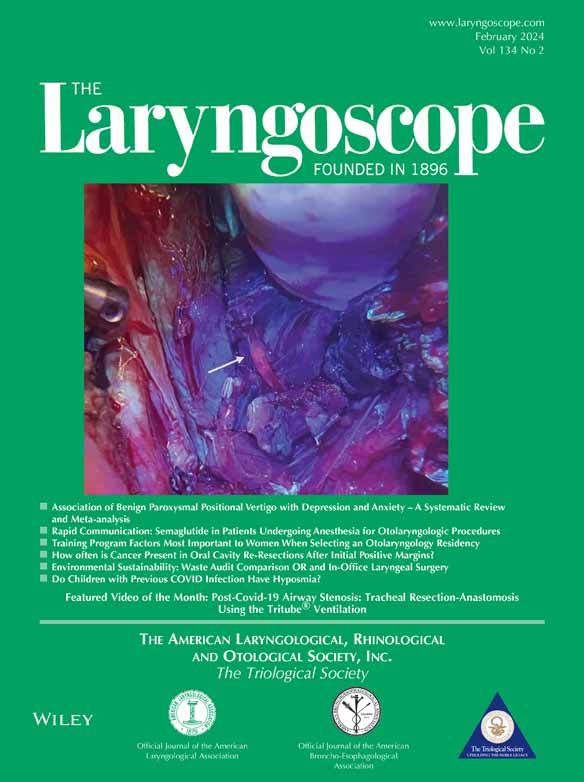A Pilot Study of Decellularized Cartilage for Laryngotracheal Reconstruction in a Neonatal Pig Model
This work was supported in part by the Children's Hospital of Philadelphia Research Institute (R.G.), the Frontier Program in Airway Disorders of the Children's Hospital of Philadelphia (R.G.), and the National Science Foundation Graduate Research Fellowship No. DGE 1845298 (P.G.), The American Laryngological Association Research Grant 2021, The National Institute of Health, P30 AR069619, R21HL159521, and R56HL16453. The authors have no other funding, financial relationships, or conflicts of interest to disclose.
This study was presented as a podium presentation at the 2023 American Laryngological Association Annual Meeting in the Combined Otolaryngology Spring Meeting, Boston, Massachusetts, United States of America, on May 3–7, 2023.
Abstract
Objective
Severe subglottic stenosis develops as a response to intubation in 1% of the >200,000 neonatal intensive care unit infants per year and may require laryngotracheal reconstruction (LTR) with autologous hyaline cartilage. Although effective, LTR is limited by comorbidities, severity of stenosis, and graft integration. In children, there is a significant incidence of restenosis requiring revision surgery. Tissue engineering has been proposed to develop alterative grafting options to improve outcomes and eliminate donor-site morbidity. Our objective is to engineer a decellularized, channel-laden xenogeneic cartilage graft, that we deployed in a proof-of-concept, neonatal porcine LTR model.
Methods
Meniscal porcine cartilage was freeze–thawed and washed with pepsin/elastase to decellularize and create microchannels. A 6 × 10-mm decellularized cartilage graft was then implanted in 4 infant pigs in an anterior cricoid split. Airway patency and host response were monitored endoscopically until sacrifice at 12 weeks, when the construct phenotype, cricoid expansion, mechanics, and histomorphometry were evaluated.
Results
The selective digestion of meniscal components yielded decellularized cartilage with cell-size channels. After LTR with decellularized meniscus, neonatal pigs were monitored via periodic endoscopy observing re-epithelization, integration, and neocartilage formation. At 12 weeks, the graft appeared integrated and exhibited airway expansion of 4 mm in micro-CT and endoscopy. Micro-CT revealed a larger lumen compared with age-matched controls. Finally, histology showed significant neocartilage formation.
Conclusion
Our neonatal porcine LTR model with a decellularized cartilage graft is a novel approach to tissue engineered pediatric LTR. This pilot study sets the stage for “off-the-shelf” graft procurement and future optimization of MEND for LTR.
Level of Evidence
NA Laryngoscope, 134:807–814, 2024




